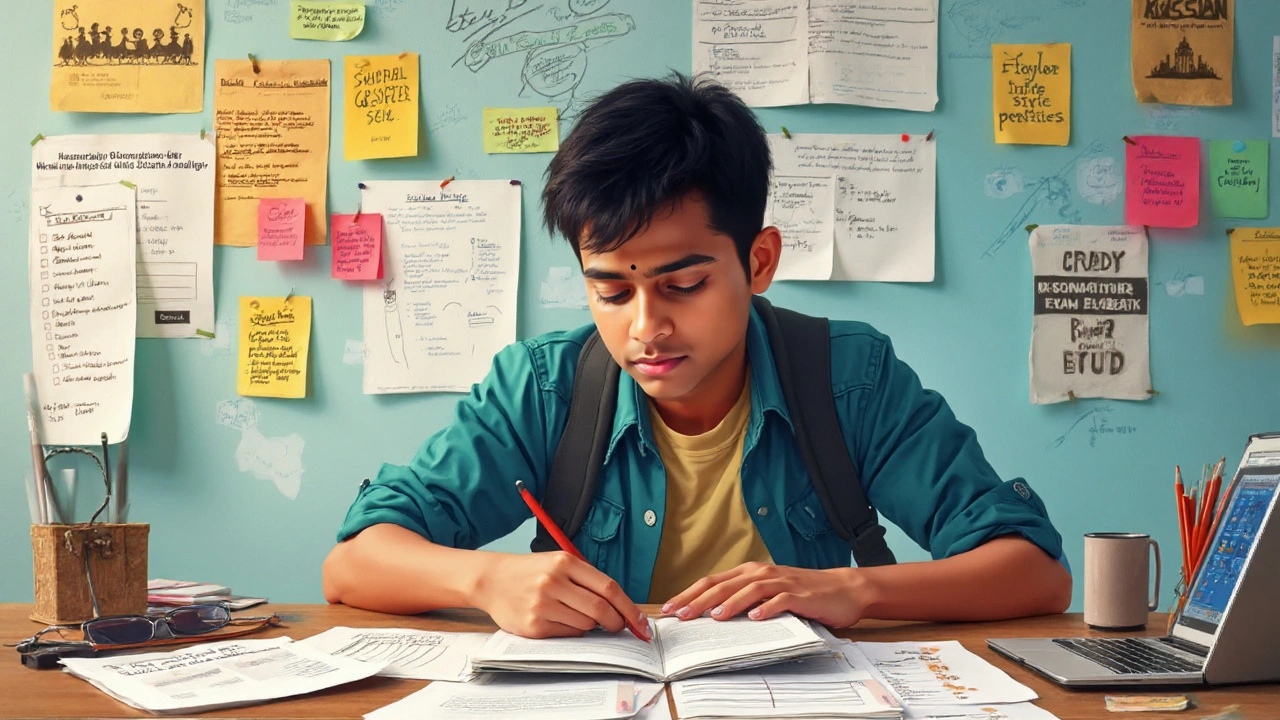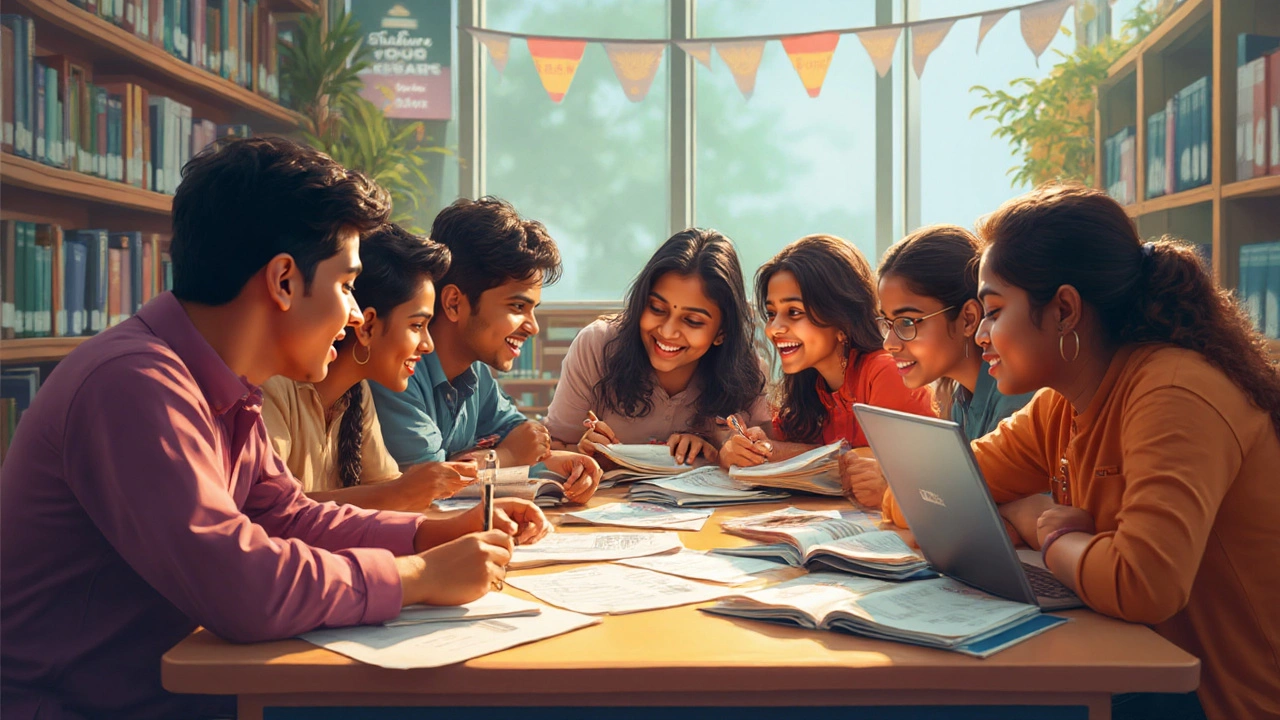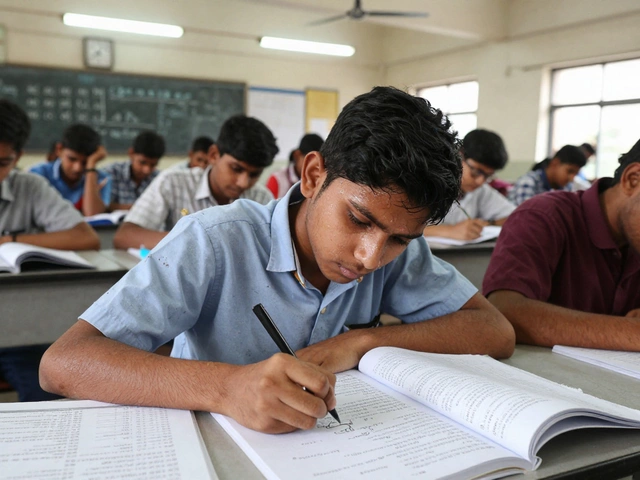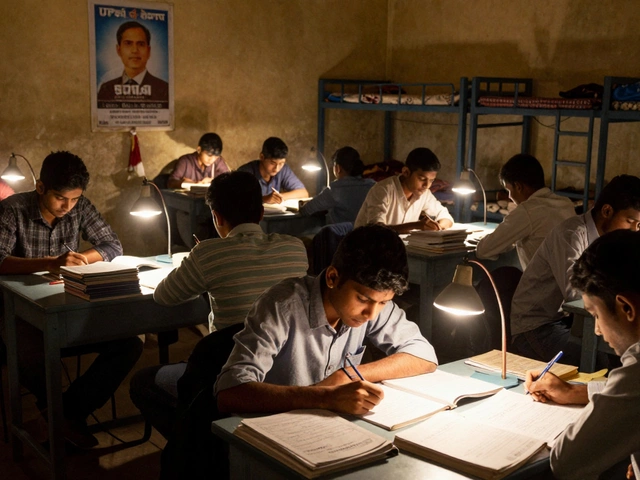What would you do if school or college suddenly became way more affordable, maybe even free, just because you aced a test? For millions, this idea isn’t just a daydream; it’s what drives them to take scholarship tests every year. Some of these tests have prize pools bigger than quiz shows, while others are the golden ticket to boarding schools or top universities. But "what is the most scholarship test" out there—the one nearly everyone wants to crack? The question sounds simple, but once you dig beneath the surface, you’ll realize there’s a maze of exams, some buzzing with government funds and recognition, others dishing out private perks that can change lives overnight. Stick around, and you’ll spot the patterns—and maybe pick up strategies the toppers actually use. Imagine getting so good at one thing, doors open everywhere. That’s what the right scholarship test does for you.
The Big Names: Which Scholarship Tests Rule the Scene?
Everywhere you look, different corners of the world claim their own "most prestigious" or "most valuable" scholarship exam. But when you zoom in on pure numbers—the applicants, the prizes, the crazy competition—some names always pop up.
For school students in India, nothing gets bigger than the National Talent Search Examination (NTSE). This test, running since 1963, attracts nearly a million aspirants every year. The prize isn’t just cash—selected students get a government scholarship all through their studies till PhD. It’s like the Hogwarts letter for talented teens, except this one is judged by Maths and Science. Results show only about 1,000 actually make the cut, so you feel almost like you’ve joined an elite club.
Move to undergraduate dreams, and everyone whispers about the Kishore Vaigyanik Protsahan Yojana (KVPY). Managed by the Indian Institute of Science, it’s the scientific Olympiad route—those who snag this scholarship often end up in pure science and research. The KVPY doesn’t just check your memory; the questions are twisted, probing how you connect concepts. What’s wild? KVPY fellows get monthly stipends, plus access to summer camps across India’s top science institutes.
Beyond national borders, the SAT and ACT scholarship programs grab the limelight. U.S.-bound? There’s almost a parallel industry helping students bag a "merit aid" through SATs, ACTs, APs, or regional scholarships like the National Merit Scholarship. Statistically, colleges in the U.S. awarded over $8 billion via merit scholarships in 2023 alone. The stiffest ones are ridiculously tough—making NTSE seem easy by comparison.
Globally, the Rhodes Scholarship, the Gate Cambridge, and the DAAD still dominate the headlines for postgraduate studies. They’re not typical tests, but you get judged on personal essays, interviews, and academic exams. Over 30,000 people battle for under 100 Rhodes spots each year. The bar is set so high, only proven student leaders with jaw-dropping grades and recommendations even apply.
Beyond these international giants, each country has its own "Super Bowl" of scholarships. For example, in China, the National College Entrance Examination (Gaokao) leads to university scholarships for the highest scorers, while in India, heaps of state-level scholarship exams fill up with hopefuls gunning for tuition waivers or free books.
| Scholarship Test | Year Started | Number of Applicants (2024) | Acceptance Rate (%) | Max Prize/Scholarship |
|---|---|---|---|---|
| NTSE (India) | 1963 | 900,000 | 0.1 | Full Government Scholarship |
| KVPY (India) | 1999 | 80,000 | 1.5 | Monthly Stipend + Research Access |
| National Merit (USA) | 1955 | 1,500,000 | 0.5 | Up to $2,500 per year |
| Rhodes Scholarship | 1902 | 30,000 | 0.3 | Full Scholarship at Oxford |
So, which one is truly "the most scholarship test"? Depends on what you mean: most applicants (NTSE), most money (Rhodes), or toughest odds (Rhodes again, maybe, or some crazy science Olympiads)! But they all test grit, IQ, and that knack for smart shortcuts.

How Scholarship Tests Work: Rules, Formats, and What Makes Them Tick
Each scholarship test follows its own playbook. Some are hard just because the questions come from left field; you think you’re good at math, they’ll ask you to solve three steps in your head—no calculator, no scribbles. Others throw in essay writing, group discussions, presentations, even puzzles. Exams like NTSE and KVPY are hand-written, at least for now, so bubbling OMR sheets is still a real skill. The SAT and ACT, on the other hand, have gone digital in the U.S., with instant question shuffling so your neighbor can’t ghostwrite your answers.
Almost all major tests have multiple rounds. For instance, NTSE kicks off with a State-level (Stage-I) screening. Every state gets a quota of winners, who then head to the National (Stage-II) finals, facing tougher questions and a broader, all-India pool. KVPY throws in a written test first, then shortlists for an interview where you could get grilled about your latest bio experiment or why you think Pluto deserved its demotion. The National Merit Scholarship, based off the PSAT/NMSQT in the USA, also moves through cutoffs, semifinals, and finalist status before anyone snags anything.
Here’s a tidbit: Most scholarship exams don’t demand only top marks. They look for "relative performance"—if 99% of people tank the last section, just holding your own can put you in the top 1%. That’s why test-makers sometimes quietly "normalize" scores or pull out wildcards (like considering co-curricular awards) if there’s a tie. Interviews are the ultimate filter; you might have a killer score, but if you mumble or freeze up, game over.
Now about the subjects—or, let’s call them hurdles. NTSE grills you on Math, Science, Social Studies, Mental Ability, and English. KVPY twists science around your brain till it hurts (yes, I’ve seen kids cry on their sample paper attempts). SAT and ACT go classic: Math, Reading Comprehension, a bit of Grammar or English, and a dash of Analytical Reasoning. Rhodes and DAAD? It’s about the total package—grades, leadership, and razor-sharp essays.
If you’re eyeing these scholarships, don’t fall for the biggest myth: that coaching is everything. Yes, lots of toppers swear by study groups or premium institutes, but the trend is shifting. A 2024 survey showed over 60% of KVPY and NTSE rankers used self-study as their main route—past papers, YouTube explainer videos, and obsessive time management. There’s a rise in parents turning living rooms into mock-test arenas on Sundays, turning off Netflix, and even bribing kids with pizza for every milestone crossed.
Pro tip: Most scholarship tests penalize guesses. Negative marking eats up your score if you start playing blindfold. Train yourself to skip if you’re 90% lost on a question—saving time is sometimes smarter than last-minute wild shots. Another lifesaver: keep an error log. Every time you bomb a topic, write it down, hunt all similar Qs in the next week, and bash them until you dream about them. Simple, but incredible for spotting patterns and weaknesses.
Here’s another odd fact—the toppers actually nap. Sleep acts as the brain’s "save progress" button. Five hours of sleep won’t cut it; aim for a solid 7, especially two nights before the exam, to let your brain shuffle facts into longer-term memory. Ignore this at your own risk. Want a quirky memory trick that works? Use the “story method”—turn boring facts into superheroes battling, falling in love, or whatever makes you snicker. Works for lists, crazy formulae, even dull historic dates.
A rising trend, especially among first-generation students? Get a buddy. Think of it like Rocky having a training partner. Someone to swap notes, quiz each other, be brutally honest about where you’re slacking. Statistically, 2023 NTSE toppers with peer groups scored 10-20% higher than loners. Schools and coaching centers have caught on and run special bootcamps, but even WhatsApp and Discord groups are now scholarship secret weapons.

Insider Tips and Common Traps: How to Stand Out from the Crowd
So, you’ve picked your “most scholarship test.” What’s the next move? Before you flood your desk with thick prep books, let’s talk tactics. The idea isn’t just to pass, but to crush the top cutoff, beat thousands (or millions!) of others, and have your name echo in the final results. Here’s how the real toppers set themselves apart from the massive, stressed-out crowd:
- Start early, but stay flexible: The sharpest students don’t wait for exam notifications. They grab previous years’ question banks and do dry runs months ahead. But, they don’t stick to just one syllabus. NTSE’s questions sometimes pull from Class 9 and 10, even for younger students, while KVPY sometimes pulls from CBSE, ICSE, and state-board material. Keep your RADAR up for pattern shifts year-to-year.
- Pace trumps panic: Scholarship exams aren’t marathons of pure memory; they’re more like obstacle races. Top scorers master time blocks. They set hour-by-hour, week-by-week plans—no cramming, no overnighters. For ACT/SAT, a 2024 study found those who did steady practice tests (2 per month) averaged 150 points higher than last-minute crammers.
- Spot the easy vs. hard questions: Don’t fall for shiny, "new-twist" problems at the start. Toppers skim sections to spot sitters—high-scoring, easy-win Qs—first, and come back for the meat-grinders later. This is huge in speed-based exams like NTSE and National Merit Semifinalist PSATs, where every minute counts.
- Get creative with revision: Instead of just re-reading, make flashcards, mind maps, wall charts. Record yourself explaining a tough topic, then play it back like a podcast. Rewire dull routines and you trick your brain into remembering more and panicking less.
- Mock interviews count as much as written prep: At scholarship stage-II or finals, the interview can be a minefield. Create cheat-sheets of common Qs: “What’s your biggest failure?” “Why this career path?” Rope in a teacher or smart friend to fire “impossible” questions, or even just record yourself and spot nervous tics.
And please, don’t ignore paperwork. You might crush the main exam, but goof up on the forms or supporting documents, you’re instantly out. Label and double-check every form, photocopy, and staple—if the rules say 2 passport-size photos, send 3. Some 2023 applicants missed out on KVPY stipends just because they forgot a signature or mistyped their bank details. Painful but true.
Here’s a curveball — even the "non-academic" tricks matter. What you say during breaks, how you help fellow contestants, and the vibe you give off at the interview sometimes weigh in, especially for global scholarships. Last year, a Rhodes judge privately mentioned favoring candidates who "light up the room without arrogance" over pure exam scores. Be a team player, not a robot with legs.
One last reality check: Every year, there are applicants with crazy bad luck. Power cuts, traffic jams, family emergencies. The pros always plan at least two contingencies. Reach centers early, carry backups of ID proof and exam admit cards, download those maps the night before. That one friend who claims, “I walked in with five minutes to spare,” probably lucked out—and you don’t want to rely on luck at a once-a-year shot.
The "most scholarship test" will always be the one that launches the most dreams—hard to define, but you know it when you see it. Find your match, prep smarter, and who knows? Next year, you just might be the story everyone else is dissecting.





